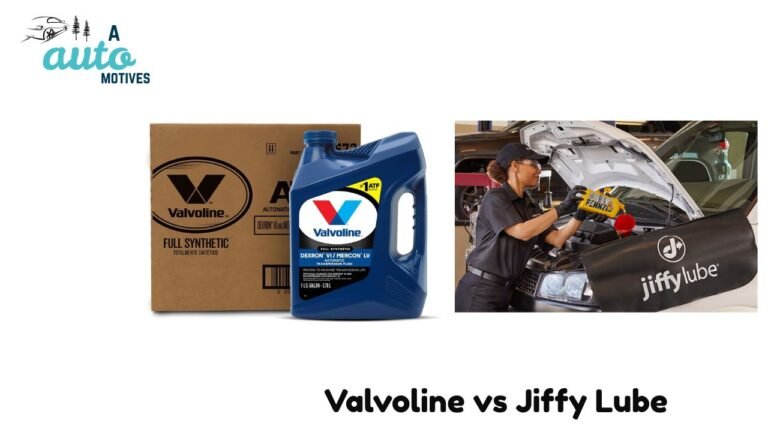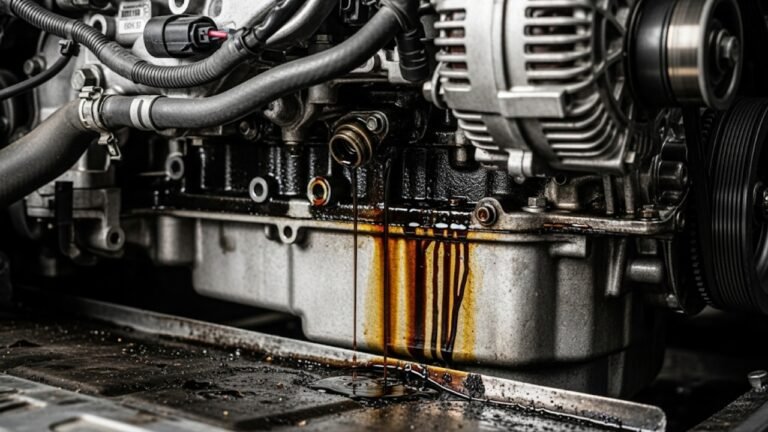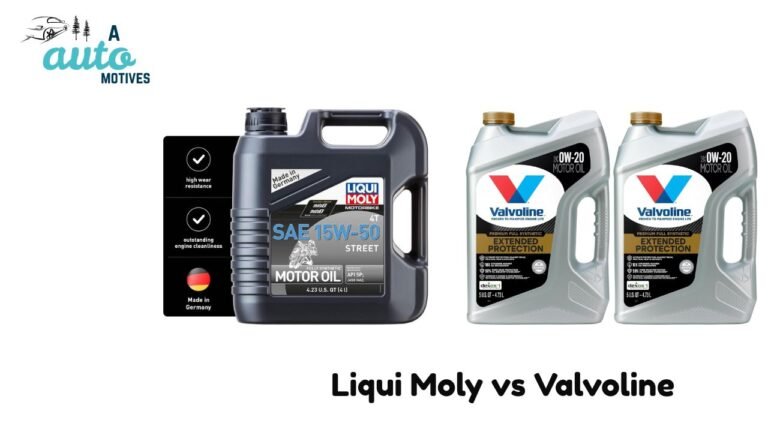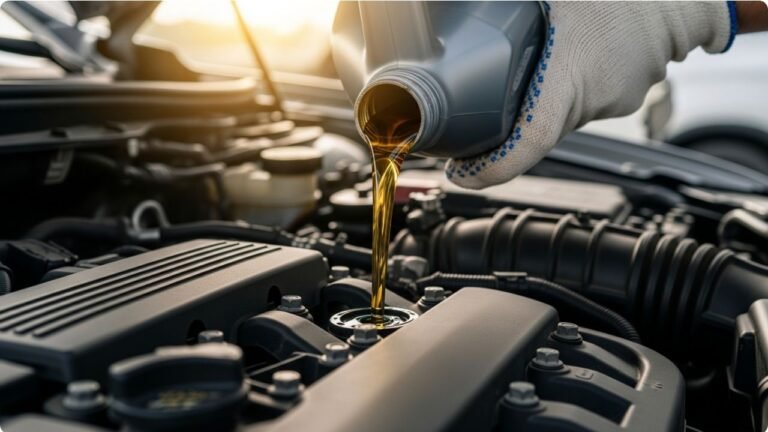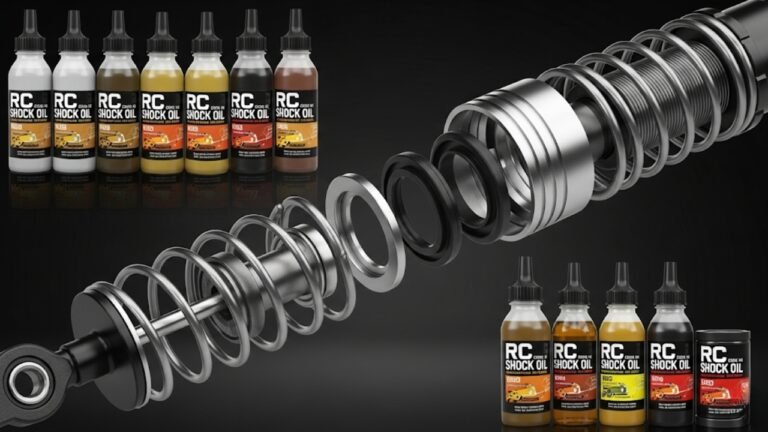Can You Drive a Car with Low Oil? – The Risk, the Reality

Ever been driving peacefully and suddenly that tiny red oil can symbol lights up on your dashboard? Yeah, it feels like your car just whispered, “We’ve got a problem.” It’s easy to ignore it—after all, you’re busy, maybe just going a few more miles. But here’s the truth: can you drive a car with low oil and get away with it?
You can, technically—but that doesn’t mean you should.
Let me tell you a quick story. A friend of mine once drove a car with low oil from Dhaka to Chattogram. Halfway there, the engine seized. The repair bill? Let’s just say it was worth more than the car itself. It’s tempting to roll the dice, but driving with low oil is like trying to fry fish without oil—it might sizzle for a bit, but it’s going to burn out fast.
In this article, we’re diving deep into the mechanics, dangers, symptoms, and solutions for low oil in your car. You’ll learn why oil is your engine’s lifeblood and what can go terribly wrong if you don’t give it the love it deserves.
Let’s pop the hood on this topic.
In This Article
- 1 Why Engine Oil Matters More Than You Think
- 2 The Real Answer: Can You Drive a Car with Low Oil?
- 3 The Warning Signs You Should Never Ignore
- 4 How Low is Too Low? Understanding the Dipstick
- 5 The Damage You Might Face (It Gets Ugly)
- 6 Real Talk: Personal Experience Behind the Wheel
- 7 What to Do If You Have to Drive with Low Oil
- 8 Preventing Low Oil Situations – Be Your Engine’s Best Friend
- 9 Common Reasons Why Cars Run Low on Oil
- 10 Expert Insight: What Mechanics Want You to Know
- 11 Is Synthetic Oil Better for Preventing Low Oil?
- 12 Can Low Oil Damage Happen Instantly?
- 13 Final Verdict: Is It Ever Worth the Risk?
- 14 FAQs About Driving a Car with Low Oil
- 15 In Closing: Your Car Deserves Better Than Low Oil
Why Engine Oil Matters More Than You Think
Think of your engine as the heart of your car. Now think of engine oil as its blood. Without enough of it, things stop working—fast.
Engine oil does a few vital things:
-
Lubricates moving parts
-
Cools down friction hot spots
-
Cleans internal surfaces
-
Protects against wear
-
Seals gaps between engine components
Without oil, the engine grinds metal against metal. Imagine running a marathon barefoot on gravel—painful, damaging, and short-lived.
The main keyword here—can you drive a car with low oil—needs context. It’s not just about turning the ignition. It’s about how far you’ll go before your engine cries for help. And that cry could come in the form of a loud bang or a dead silence under the hood.
The Real Answer: Can You Drive a Car with Low Oil?

Driving with low oil might seem fine at first. Your car might start, run, and even feel normal. But the danger is internal. The engine’s metal parts are spinning at thousands of RPMs. Without oil cushioning them, the wear is immediate.
In most modern cars, if oil levels drop too low, the vehicle may automatically enter a “limp mode” or shut down to protect itself. But older cars might not have this safety net.
A car with low oil will:
-
Overheat quickly
-
Show reduced performance
-
Make knocking or ticking noises
-
Risk total engine failure
So, can you drive a car with low oil? Technically, yes. Realistically, you shouldn’t.
The Warning Signs You Should Never Ignore
If you’re wondering whether your car is running low on oil, your vehicle is probably already trying to tell you.
Here are the common warning signs:
-
Oil pressure light is on
-
Burning smell under the hood
-
Loud engine noise, especially ticking or knocking
-
Smoke from the exhaust
-
Overheating or sudden performance drop
When any of these show up, don’t wait. Pull over, check your oil level, and don’t keep driving if it’s below the dipstick’s safe range.
How Low is Too Low? Understanding the Dipstick
Knowing your oil level is key. And no, it’s not rocket science.
Here’s how to check it:
-
Park on level ground and let the engine cool.
-
Pull the dipstick out, wipe it clean, reinsert, then pull it again.
-
Look at the “Low” and “Full” marks.
If the oil is below the low mark, you’re running on borrowed time.
| Oil Level | Driving Safety | Action Needed |
|---|---|---|
| Full | Safe | No action needed |
| Mid-level | Caution advised | Top off when possible |
| Just above Low | Risky | Add oil immediately |
| Below Low | Dangerous | Stop driving now |
So, to circle back: can you drive a car with low oil if it’s barely showing on the stick? Only long enough to get oil. That’s it.
The Damage You Might Face (It Gets Ugly)
Still thinking about risking it? Let’s look at what happens when you keep driving with low oil:
-
Friction skyrockets: No oil means metal scrapes metal. Pistons, crankshafts, bearings—they all get damaged.
-
Overheating: Oil helps cool. Without it, engine temperature goes through the roof.
-
Warped components: Heat and friction distort metal parts.
-
Engine seizes: The engine could literally freeze in place.
-
Total replacement: You may need a whole new engine.
Repairs range from $500 for a basic fix to $5,000+ for a new engine.
It’s a classic case of “penny wise, pound foolish.” A bottle of oil costs $10. Skipping it could cost you your car.
Real Talk: Personal Experience Behind the Wheel
Let me get personal here.
A few years ago, I drove an old Toyota Corolla—my first car. One day, I ignored the oil light for a whole week. I thought, “It’s probably just a faulty sensor.” You know what happened?
The engine made this weird ticking noise one morning. I still drove it. By noon, the sound turned into a loud bang. That was it. Tow truck. Mechanic. A cracked piston rod. The repair cost me $2,300. Lesson learned—never drive with low oil.
That tiny bottle of golden liquid? It’s not optional—it’s life support.
What to Do If You Have to Drive with Low Oil
Sometimes, you’re stuck. No mechanic nearby, and you’ve got a short distance to cover.
If you absolutely must drive a car with low oil, follow these emergency steps:
-
Add what oil you can, even if it’s not the perfect match.
-
Drive slowly, no more than 30-40 km/h.
-
Avoid highways and long trips.
-
Don’t let the engine idle for long.
-
Check the level every few kilometers if possible.
Still, the better move? Call for help. Get a ride. Borrow a car. Anything but risking your engine’s life.
Preventing Low Oil Situations – Be Your Engine’s Best Friend
Preventing low oil levels is easier than you think. The trick? Make oil checks a habit, just like brushing your teeth. No drama. Just a quick dipstick check every week.
Here’s what you can do to stay ahead of a disaster:
-
Check oil weekly or every 500 km
-
Change oil every 5,000–7,000 km, depending on your car and oil type
-
Use the correct oil grade recommended in your car manual
-
Replace the oil filter during oil changes
-
Keep an eye on leaks—small drips add up fast
Cars lose oil over time, either by burning or leaking. The older the engine, the more attention it needs. If your car burns oil faster than it should, see a mechanic. Don’t let it become a guessing game.
Imagine oil like hydration. Just like you wouldn’t go days without water, your engine shouldn’t go long without oil.
Common Reasons Why Cars Run Low on Oil
Ever wonder why you keep topping off the oil?
Here’s a table breaking it down:
| Reason | Explanation |
|---|---|
| Oil Leak | Most common. Can come from seals, gaskets, or oil pan. |
| Burning Oil | Often due to worn piston rings or valve seals—common in older engines. |
| Poor Maintenance | Skipping oil changes means dirty, thin oil that burns or leaks faster. |
| Overheating Engine | Heat causes oil to degrade and burn faster. |
| Wrong Oil Type | Thin oil evaporates or burns faster than what’s recommended for your engine. |
If you’re constantly adding oil between changes, your car is trying to tell you something. Don’t wait for a full-blown issue. It’s cheaper to fix a gasket than to rebuild an engine.
Expert Insight: What Mechanics Want You to Know
I had a chat with a local auto expert, Mr. Rezaul from a garage in Uttara. He’s been fixing engines for over 20 years.
His golden advice?
“People think oil is like fuel—you only add when it’s empty. But oil isn’t just for running; it’s for protecting. Driving with low oil wears out the engine like sandpaper on skin.”
He also mentioned that 80% of engine failures he sees are due to neglect. Not mechanical flaws. Not faulty parts. Just plain neglect.
That’s powerful stuff. Think of your oil check like a safety belt—you don’t wait to crash before buckling in.
Is Synthetic Oil Better for Preventing Low Oil?
Let’s settle a debate while we’re here.
Synthetic oil vs conventional oil—what’s better to avoid low oil levels?
| Type | Benefits |
|---|---|
| Synthetic Oil | Longer-lasting, better at high temps, resists evaporation |
| Conventional | Cheaper, suitable for older cars, but breaks down faster |
Synthetic oil is generally better if your engine runs hot, you drive in traffic often, or you want longer intervals between oil checks. While it’s pricier upfront, it might save you from frequent top-offs.
If you’re serious about preventing low oil, consider switching to full synthetic and pairing it with high-quality filters.
Can Low Oil Damage Happen Instantly?
You might think, “I’ll just finish this one errand and add oil later.”
Bad idea.
Damage from low oil can begin within minutes, especially at high speeds or during hot weather. Even if the engine doesn’t die immediately, small amounts of wear build up.
Think of it like sun damage on skin. One time doesn’t show much—but repeated exposure? Wrinkles, burns, cancer.
Likewise, driving with low oil once or twice might seem harmless. But over time, it grinds your engine down. Your car remembers even if you forget.
Final Verdict: Is It Ever Worth the Risk?
Let’s put it plainly.
Can you drive a car with low oil? Yes, but should you? Absolutely not.
It’s one of those things that’s easy to ignore until it’s too late. We live in a fast-paced world. We stretch our limits and often, our car’s limits too. But when it comes to engine oil, even a little neglect can leave you stranded.
So the next time that oil light flashes or your car starts ticking louder than usual—pause. Check your oil. Top it off. Or better yet, get it changed.
Your car will thank you. So will your wallet.
FAQs About Driving a Car with Low Oil
1. What happens if you keep driving with low oil?
Your engine parts wear out quickly, friction increases, and the engine can seize. It may lead to expensive damage or complete engine failure.
2. How long can a car run with low oil?
It depends, but usually less than 30–50 km. Even then, it’s risky. It’s not about the distance—it’s about the damage.
3. Can I add oil instead of changing it?
Topping off is a short-term fix. But oil degrades over time. Always change it as per your car’s schedule.
4. Can low oil cause your car not to start?
Yes. In extreme cases, the engine will fail to turn over to prevent further damage. Some cars may also go into “limp mode.”
5. How do I know if my engine is damaged from low oil?
Watch for loud knocking sounds, reduced performance, smoke from the exhaust, or metal shavings in oil. A mechanic can confirm internal damage.
6. How much oil is ‘too low’?
Anything below the low mark on your dipstick is unsafe. If it doesn’t show on the stick at all, don’t drive.
7. Can synthetic oil prevent low oil problems?
It lasts longer and evaporates slower, so it’s better for preventing low oil—especially in modern or high-mileage engines.
8. Why does my car burn oil so fast?
Common reasons include worn piston rings, valve seals, or a damaged PCV valve. Older engines are more prone to burning oil.
In Closing: Your Car Deserves Better Than Low Oil
Every car has a voice—it might not speak in words, but it sure tells you when something’s wrong. That ticking engine, the warning light, the burning smell? All signs it needs oil, and it needs it now.
So, next time someone asks can you drive a car with low oil, tell them this: Yes, but not for long—and you might regret every mile you drove.
Show your engine some love. Check the oil. Top it off. Change it when needed.
It’s the simplest way to keep your car healthy, powerful, and running for years.

